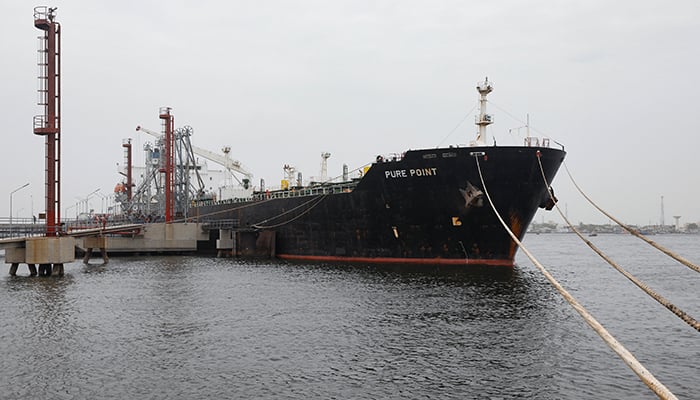- PRL may take two months to refine 100,000 tonnes of Russian crude.
- Refineries already facing a shortage of furnace oil; export it at 25% loss.
- Arrival of remaining Russian crude readjusted due to storage constraints.
ISLAMABAD: In two weeks, the Pakistan Refinery Limited (PRL) is likely to submit to the government a report about the quality, yields, and commercial viability of the Russian crude oil URAL — which is heavier — The News reported, quoting a Petroleum Division senior official.
The PRL, which is in the process of refining Russian crude, will submit the report to the Petroleum Division about the yields (production of petrol, diesel, FO, and light diesel oil, in terms of percentages), quality, and — more importantly — its viability for Pakistan’s economy after refining cost and margins of the refinery have been worked out.
The report will help the government’s relevant functionaries decide whether to go for a GtG import deal with Russia.
The local refineries currently produce an average of motor spirit (petrol) at 25-30% and furnace oil at 45% by using the crude of Saudi Aramco and ADNOC.
However, the official said that half of the 100,000 tonnes of Russian crude would be exported as furnace oil at 75% of the crude cost with a 25% loss because URAL crude is heavier crude, and 50% of furnace oil will be produced.
“Pakistan refineries that use crude mostly from Saudi Aramco and ADNOC are already facing an ullage of furnace oil in their storages and they export the furnace oil with a 25% loss.”
The deep conversion refineries in Dubai make finished products out of the furnace oil that Pakistan refineries have exported at 25%.
The official said PRL — an old refinery — is processing the Russian crude.
Even though the heavy Russian crude is a discounted fuel, PRL will produce 50% furnace oil out of it, meaning that the ship containing 50,000 tonnes will be exported as furnace oil as its utility in Pakistan is not up to the mark.
Last Sunday, PRL just exported 25,000 furnace oil out of the crude that it normally uses from Saudi Aramco and ADNOC.
“However, because of the gas crisis in the country, and the increase in temperature, the demand of electricity has increased and the authorities concerned have started using the local furnace oil for power generation too.”
The official disclosed that PRL might take two months’ time to refine 100,000 tonnes of Russian crude as it first blends 25-30% of Russian URAL with 70-75% of the crude from Saudi Aramco, and then it refines the blended crude.
The Petroleum Division official said the first cargo carrying 45,000 tonnes of Russian crude arrived at Karachi Port Trust on June 11. Now, the same shipment with 55,000 tonnes would arrive again on June 29 — earlier scheduled to arrive on June 20.
The arrival of remaining Russian crude has been readjusted because of the storage constraints. And on top of it, the official said a vessel containing 70,000 tonnes crude oil from Saudi Aramco is due on June 25 for Pakistan Refinery Limited.
The main ship from Russia with 100,000 tonnes of URAL crude arrived in Oman on June 7. From there, a small ship had been arranged to transport the crude in two rounds.

 Latest News3 days ago
Latest News3 days ago
 Business3 days ago
Business3 days ago
 Latest News2 days ago
Latest News2 days ago
 Entertainment3 days ago
Entertainment3 days ago
 Business3 days ago
Business3 days ago
 Latest News3 days ago
Latest News3 days ago
 Business3 days ago
Business3 days ago
 Latest News3 days ago
Latest News3 days ago






















